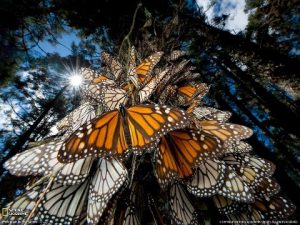 The Yogabliss, Two Rivers/RiverTree Yoga on-line Moving into Meditation classes met this morning. We are adapting to new ways of living in response to the many changes we are living through. Many of us are emerging from the isolation of pandemic restrictions. Some of us have been caring for young ones and/or elders, partners and friends. Our practice gives us an opportunity to pause, relax, open and trust what is emerging. These are powerful healing skills that enable us to tune into to what matters most. These skills also help us to “resource” and befriend ourselves so that we can stay engaged with Life.
The Yogabliss, Two Rivers/RiverTree Yoga on-line Moving into Meditation classes met this morning. We are adapting to new ways of living in response to the many changes we are living through. Many of us are emerging from the isolation of pandemic restrictions. Some of us have been caring for young ones and/or elders, partners and friends. Our practice gives us an opportunity to pause, relax, open and trust what is emerging. These are powerful healing skills that enable us to tune into to what matters most. These skills also help us to “resource” and befriend ourselves so that we can stay engaged with Life.
Once again, we drew guidance from Insight Dialogue co-creator and Insight Dialogue: The Interpersonal Path to Freedom author and meditation teacher, Gregory Kramer. Insight Dialogue involves mindful sharing within qualities of attention, contemplation and intimate inquiry. Gregory encourages us to be with the mystery as it unfolds much like the unfolding flight patterns of birds. For a rapturous experience of mystery and unfolding you can listening to a human and nightingale singing together at Emergence Magazine’s interview with Sam Lee, The Nightingale’s Song.
We drew inspiration from Jane Hirshfield’s magical poem, Rebus, included in her collection Given Salt, Given Sugar. Jane is a long-time Zen practitioner whose meditation practice informs her work. You can listen to Jane read seven of her poems on this YouTube recording filmed by Pamela Robertson-Pearce.
Relaxed Reflection
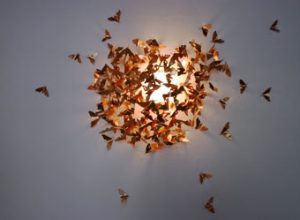 Thank you so much for being here . . . this here that is purely the moment after moment expressed in sound and sensation . . . so much unseen and yet embodied . . . . You can feel . . . You can breathe . . . Together we experience ordinary miracles . . . We can stretch time and wander in the continuous stream of changes in our bodies . . . How does your body make itself known to you? Can your mind agree to hold sensations long enough to create a true relationship? Feeling your feet long enough to come to know them? How do you feel the weight of stillness in your chest? Can you sense the intelligence of your hands? Here we are together . . . savoring life.
Thank you so much for being here . . . this here that is purely the moment after moment expressed in sound and sensation . . . so much unseen and yet embodied . . . . You can feel . . . You can breathe . . . Together we experience ordinary miracles . . . We can stretch time and wander in the continuous stream of changes in our bodies . . . How does your body make itself known to you? Can your mind agree to hold sensations long enough to create a true relationship? Feeling your feet long enough to come to know them? How do you feel the weight of stillness in your chest? Can you sense the intelligence of your hands? Here we are together . . . savoring life.
When we come to meditate we let go of controlling our experience and allow it to unfold. We are taught to follow our breath . . . body sensations . . . to stay still through the waves of mental states drawing us to distraction . . . Learning what it is to be human. Learning to be with ourselves without judgment . . . making peace with ourselves . . . befriending ourselves. . . . Feelings and thoughts arise and we gradually come to know them . . . how these states have signatures written on our bodies . . . in our minds . . .
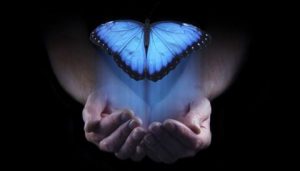 If we give ourselves enough time and the kinship of loving awareness our inner turmoil spends itself out like a long rolling wave unfurling . . . Every emotion has its own ebb and flow . . . a life of its own . . . In riding those waves we come to know ourselves in such a pure way . . . the smallness and also the largeness of the life that we are . . . Through the courage and energy we bring to this relationship with ourselves we come to understand the relational nature of life.
If we give ourselves enough time and the kinship of loving awareness our inner turmoil spends itself out like a long rolling wave unfurling . . . Every emotion has its own ebb and flow . . . a life of its own . . . In riding those waves we come to know ourselves in such a pure way . . . the smallness and also the largeness of the life that we are . . . Through the courage and energy we bring to this relationship with ourselves we come to understand the relational nature of life.
Insight Dialogue teacher Gregory Kramer explains what happens when we “Trust Emergence:”
A group gathered expressly for meditation provides a rare opportunity to meet life in a radical way, stripped of social norms regarding productivity and accomplishment. From such a practice we learn new ways to live. The guideline Trust Emergence calls us to experience what it is just to be with another person, or a group of people in the present moment, not looking forward to something that may happen in the future.
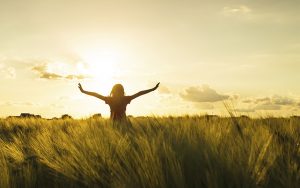 Today we are learning new ways to live. We are emerging from so many old ways of living: pandemic isolation, dependence on fossil fuels, structural racism just to name a few. Our simple and profound practice helps us to be with the truth of our individual, inter-personal and collective experience. Poet Jane Hirshfield describes the slow learning in her poem, Rebus.
Today we are learning new ways to live. We are emerging from so many old ways of living: pandemic isolation, dependence on fossil fuels, structural racism just to name a few. Our simple and profound practice helps us to be with the truth of our individual, inter-personal and collective experience. Poet Jane Hirshfield describes the slow learning in her poem, Rebus.
Rebus
You work with what you are given,
the red clay of grief,
the black clay of stubbornness going on after.
Clay that tastes of care or carelessness,
clay that smells of the bottoms of rivers or dust.
Each thought is a life you have lived or failed to live,
each word is a dish you have eaten or left on the table.
There are honeys so bitter
no one would willingly choose to take them.
 The clay takes them: honey of weariness, honey of vanity,
The clay takes them: honey of weariness, honey of vanity,
honey of cruelty, fear.
This rebus—slip and stubbornness,
bottom of river, my own consumed life—
when will I learn to read it
plainly, slowly, uncolored by hope or desire?
Not to understand it, only to see.
As water given sugar sweetens, given salt grows salty,
we become our choices.
Each yes, each no continues,
this one a ladder, that one an anvil or cup.
The ladder leans into its darkness.
The anvil leans into its silence.
The cup sits empty.
How can I enter this question the clay has asked?
Let’s enter each breath . . . each movement in this spirit of curiosity and a willingness to see, to feel, to be . . . Here we are pausing, relaxing, opening and trusting what is emerging. This is how we work with what we are given . . . how we “enter the question the clay has asked.” Gregory reminds us:
. . . In a world where everything changes, it is clinging that causes pain. Going with the change, simply rest in awareness. Hold the simple question, “What is emerging now?” Let go of imagined control of experience. Remember this guideline and dwell lightly in the moment . . .
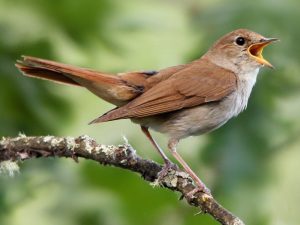 What is emerging now? . . . . . Our personal experience is embodied within our network of family, friends, community, the natural world. How are we emerging as Life expressing itself in form, feeling, thought and spirit? The the ever changing nature of experience is revealed in unpredictable and surprising ways – like the song of a nightingale emerging in beautiful patterns of sound – a vibrating dance carried on air into our ears. The nightingale and his song are held in the clay cup of our awareness. In the wider circle of our practice we can consider the songs we are singing – how they are informed by birdsong and everything else we hear. We can wonder where does our voice travel and whose ears are we touching?
What is emerging now? . . . . . Our personal experience is embodied within our network of family, friends, community, the natural world. How are we emerging as Life expressing itself in form, feeling, thought and spirit? The the ever changing nature of experience is revealed in unpredictable and surprising ways – like the song of a nightingale emerging in beautiful patterns of sound – a vibrating dance carried on air into our ears. The nightingale and his song are held in the clay cup of our awareness. In the wider circle of our practice we can consider the songs we are singing – how they are informed by birdsong and everything else we hear. We can wonder where does our voice travel and whose ears are we touching?
Gregory reminds us that
. . . these beautiful patterns simply emerge, just as the colors in the sunset simply emerge. Indeed, when we are observing nature, we get a sense of the constant emergence of life, of change. And it is that sense of change, that sense of the unfolding present, that is inherent in this meditation instruction to trust emergence.
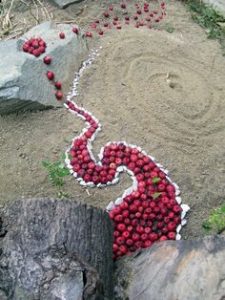 How is it for you to trust this ever unfolding present? Again and again we step into the unknown and we trust. We trust the next incoming breath. We surrender in the quiet moments of our choosing and often in the midst of struggle. Experience dissolves every instant. In loving awareness we begin to appreciate the mystery of what arises and passes away. A true encounter with Life is always a mystery. As Gregory writes when:
How is it for you to trust this ever unfolding present? Again and again we step into the unknown and we trust. We trust the next incoming breath. We surrender in the quiet moments of our choosing and often in the midst of struggle. Experience dissolves every instant. In loving awareness we begin to appreciate the mystery of what arises and passes away. A true encounter with Life is always a mystery. As Gregory writes when:
. . . we recognize the exquisite insecurity inherent in complex humans meeting each other. This not knowing humbles us into full attentiveness, creativity, and care.
This is the work we are given: the humbling way of full attention, creativity and care. At times the “red clay of grief” of the “clay that tastes of care or carelessness.” Our lives unfold in thoughts we choose to bring to life or abandon. The bitter, sticky honey of our days – the weariness, vanity, cruelty and fear – is held in the clay of our living. The humbling way is perhaps not to understand – but to see the unfolding mystery.
